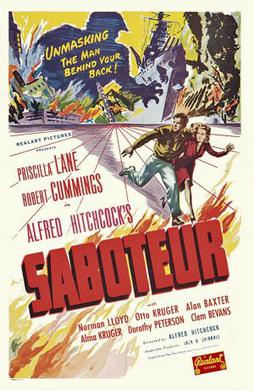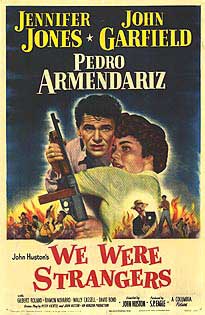A blog formerly known as Bookishness / By Charles Matthews
"Dazzled by so many and such marvelous inventions, the people of Macondo ... became indignant over the living images that the prosperous merchant Bruno Crespi projected in the theater with the lion-head ticket windows, for a character who had died and was buried in one film and for whose misfortune tears had been shed would reappear alive and transformed into an Arab in the next one. The audience, who had paid two cents apiece to share the difficulties of the actors, would not tolerate that outlandish fraud and they broke up the seats. The mayor, at the urging of Bruno Crespi, explained in a proclamation that the cinema was a machine of illusions that did not merit the emotional outbursts of the audience. With that discouraging explanation many ... decided not to return to the movies, considering that they already had too many troubles of their own to weep over the acted-out misfortunes of imaginary beings."--Gabriel García Márquez, One Hundred Years of Solitude
Search This Blog
Showing posts with label Peter Viertel. Show all posts
Showing posts with label Peter Viertel. Show all posts
Friday, June 2, 2017
Beat the Devil (John Huston, 1953)
Humphrey Bogart called John Huston's Beat the Devil a "mess," which it is, but much of the messiness is due to Bogart's presence in the film. His tough-guy persona, for which Huston himself was largely responsible after casting Bogart in roles like Sam Spade in The Maltese Falcon (1941) and Fred C. Dobbs in The Treasure of the Sierra Madre (1948), puts him tonally out of sync with the rest of the cast of eccentrics in Beat the Devil. Bogart doesn't seem to know how to play Billy Dannreuther, an American trying to recoup his fortunes by playing along with some rather oddball crooks and grifters: the florid Peterson (Robert Morley), the German-Chilean who calls himself O'Hara (Peter Lorre), the lugubrious Italian Ravello (Marco Tulli), and the fascist Maj. Jack Ross (Ivor Barnard), whose name almost suggests his character -- a humanoid Jack Russell terrier with a hair-trigger temper. Moreover, Dannreuther is rather improbably mated with the scheming Maria (Gina Lollobrigida) and equally improbably wooing the compulsive liar Gwendolen Chelm (Jennifer Jones). That Bogart has no chemistry with either actress, both of whom give delicious performances, further drags the film down. Jones made two films with Huston, this one and the little-seen We Were Strangers (1949), and they are two of the most interesting performances in her career, making me wish that Huston had been able to release Jones more frequently from the clutches of David O. Selznick. Everyone, including Edward Underdown as Gwendolen's husband, Harry, does delightful comic work except Bogart, who glumly and blankly delivers lines he doesn't seem to be trying to understand. That may be understandable, given that the screenplay was being written by Huston and Truman Capote -- and the uncredited Peter Viertel and Anthony Veiller -- pretty much on the fly while the film was being made. The result is a collection of very amusing moments pieced together with a lot of cobbled-together nonsense about uranium deposits in Africa -- in short, the stuff of which cult movies are made. I'm not a member of the cult, but I happily watch Beat the Devil every now and then, especially for the performances of Jones and Morley and Lorre, while wishing that Huston had cast someone more skilled than Bogart -- Grant? Stewart? Cooper? -- at working amid chaos and nonsense.
Friday, April 21, 2017
Saboteur (Alfred Hitchcock, 1942)
It's heresy to suggest it, but Alfred Hitchcock needed movie stars. It's no accident that some of his most admired films featured Cary Grant, James Stewart, Grace Kelly, and Ingrid Bergman. They seemed to inspire him to do his best work. I don't know if Saboteur would have been a better movie if Hitchcock had got his first choice of leads: Gary Cooper and Barbara Stanwyck. But I do know that they would have supplied the kind of charisma and finesse that are sorely lacking in Robert Cummings and Priscilla Lane. Cooper and Stanwyck might also have inspired Hitchcock to give the film more than just more than a few now-familiar suspense tricks and one deservedly famous set piece -- the final scene on the torch of the Statue of Liberty. He might have been moved to prod his usually more-than-competent screenwriters -- Peter Viertel, Joan Harrison, and Dorothy Parker -- to shape the story into something that makes a little more sense. It's the familiar Hitchcockian "wrong man" premise, one that was done far more skillfully in The 39 Steps (1935), would be improved on in Strangers on a Train (1951), and reach its apotheosis in North by Northwest (1959) -- whose climactic struggle on Mount Rushmore was surely inspired by Saboteur's Statue of Liberty sequence, one national monument standing in for another. Cummings and Lane don't strike any sparks with each other, but they aren't bad considering since they're flung into absurd situations -- his initial flight from prosecution, his encounter with a truck driver and a kindly blind man who are mysteriously motivated to help someone suspected of treason, their rescue by a troupe of circus sideshow performers, their blithely elided cross-country journey, their entrapment in a mansion full of high-society fascists, their perfunctorily treated escape, and the loony decision of the villain (Norman Lloyd) to flee to what amounts to a cul-de-sac, i.e., the Statue. Granted, almost every Hitchcock film can be picked apart on the grounds of plausibility, but he usually does a better job of covering it up. In the end, Saboteur reminds me of his earlier film, Young and Innocent (1937), another movie with charisma-deficient stars and a jury-rigged plot in which the director seems to be trying out things he will accomplish with more skill in his later work.
Thursday, December 22, 2016
We Were Strangers (John Huston, 1949)
Fidel Castro, who died this year, came to power in 1959, ten years after We Were Strangers, which deals with an earlier Cuban revolution, was made. Castro's own revolution is probably why this film, despite its major director and stars, is so little known. It was never revived after its initial showing, and didn't become available on video until 2005 despite the reputation of its director, John Huston. It's a fairly scathing look at the failure of the United States to support the overthrow of the Machado dictatorship in 1933. John Garfield plays Tony Fenner, a Cuban-born American who works with the underground revolutionaries to overthrow Machado. He comes up with a rather complicated plot to tunnel into the Colón Cemetery and plant a bomb that will kill the regime's leaders. He enlists a group who have no previous ties with one another, including China Valdés (Jennifer Jones), a bank clerk whose brother was killed by the Havana police chief, Armando Aréte (Pedro Armendáriz), and who lives in a house across the street from the cemetery. The plan is to assassinate a high-ranking member of the regime and detonate the bomb when the dignitaries gather for his funeral. But Fenner's plan is just a little too complicated, and things go awry. It's a curious film to be made just as the red scare was heating up in Washington and Hollywood, for the script by Peter Viertel and director John Huston has no scruples about portraying the violent revolutionaries as heroic. The revolutionaries even countenance the collateral damage of killing innocent people at the funeral, although one of their company has serious reservations about it and, worn down by the hard work of tunneling, goes mad. Garfield, who would soon be threatened with blacklisting as a leftist, gives a typically intense performance, and Jones, though miscast, does a passable imitation of a determined Cuban revolutionary. Armendáriz, whom Hollywood often relegated to Latino sidekick roles, is a fine, sinister villain. Gilbert Roland, as a singing, wisecracking member of the revolutionary team, provides what levity the film possesses, and Ramon Novarro has a cameo as the chief who authorizes Fenner's plan. There's some obvious use of rear projection in which the actors are superimposed against scenes actually filmed in Havana, but Russell Metty's cinematography is mostly quite effective.
Subscribe to:
Comments (Atom)


